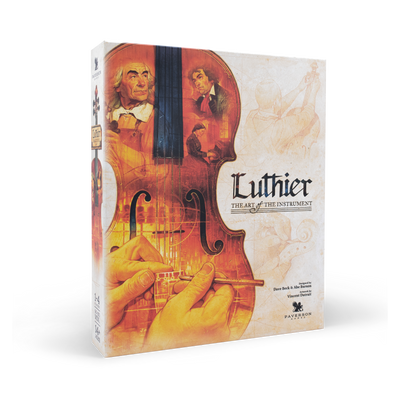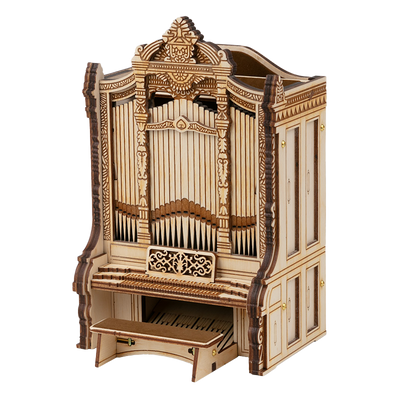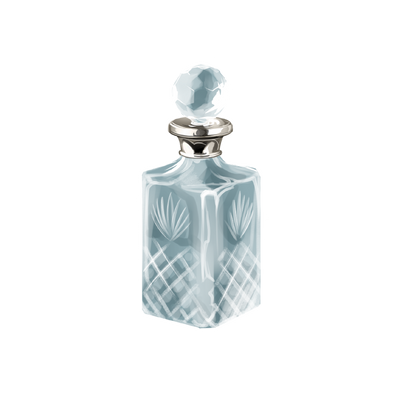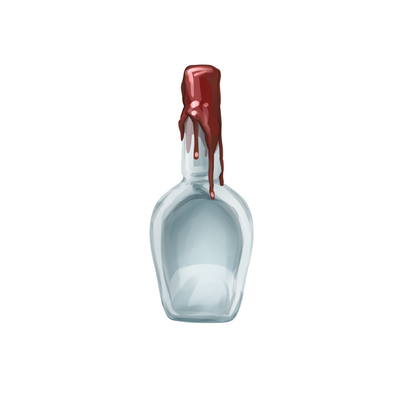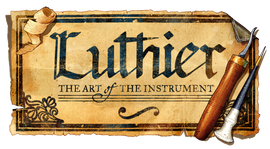Paverson Games is proud to announce that Luthier will feature not one, but two artists. Taking the lead and directing the overall art in the game will be the award-winning, highly talented and famous artist and illustrator, Vincent Dutrait. You might recognize Vincent's work from such titles as HEAT: Pedal to the Medal, The Quest for El Dorado, Robinson Crusoe, and many others!
Vincent has been our favorite artist in the board game world for some time now, largely due to the analog approach he takes to creating work. While most artists these days work mainly with digital tools, Vincent is still sketching, drawing, and painting with pencils, markers, and paintbrushes. You can see it in his work, too - the hand-crafted, thoughtful, and natural look of the work is exactly what we were looking for with Luthier!

To celebrate this big announcement, we asked Vincent to speak a bit about his work and his life, so that you all can get to know him a bit better, and he replied with this short bio:
"I have been creating artwork in the “traditional” way for more than 25 years. Hand-drawn and painted using pencils, brushes and paint on paper. Proudly upholding the history and heritage of documented, lifelike conventional art. While at the same time developing modern sensitivities and approaches to pictorial storytelling. I have illustrated children’s books and role-playing games, and my focus these days is on board games. I work with numerous game designers and publishers around the world, across multiple genres, including science fiction, adventure, mystery and supernatural, noir fiction and heroic fantasy. Over the years, I’ve added some new strings to my bow, allowing me to create the digital graphic design for many projects on which I have worked. My knowledge of the publishing world and related technical and functional skills helped me to manage and master each step in the graphic chain. Also, I have discussed and contributed to many projects from an early stage, offering artistic direction and advice, as well as helping to develop game worlds and themes. Transmitting and sharing are my watchwords."

We were also excited about Vincent working on Luthier due to both the historical instruments and the dozens of portraits that will be found in the game. We feel these areas speak to his skillset, and it turns out also speaks to his history! We asked Vincent about what his connection to Luthier might be, either through instruments or other avenues. He answered by saying:
"I have been playing piano since my childhood, as music is somewhat of a family tradition. Moreover, my grandfather used to work wood in his workshop filled with the sweet scents of honey and turpentine, creating decorative objects and furniture. Luthier is now a fantastic opportunity for me to connect these two passions that I hold dear!"

But Vincent isn't the only artist who will be making the game come alive! Due to the sheer size and scope of the game, as well as Paverson Games’ dedication to lifting the game’s art up to the same level as its design, we decided to commission two artists to work on Luthier! While Vincent is taking the lead on art direction and most of the game’s illustrations, we knew we had the chance to spotlight another talent for the game’s main board in the center of the table.
Luthier is really quite big. The strategic weight of the game + emphasis on art everywhere + component quality + exquisite experience = an octobass of a game on the table (go ahead, click that sucker and see what we mean - we’ll wait!). Players will have their own boards in front of them, representing workbenches in their family workshop, but the entire table shares a very large main board where much of the action occurs.

Since Luthier is a worker placement game at heart, it means you’re sending workers out to do various tasks. We needed a central location that was thematically and visually fitting for the game experience. The main board’s design is meant to resemble a large building, which really starts to get exciting to think about how the game’s mechanics and the overall setting can feel as integrated as possible throughout the experience.
From the beginning, Vincent had suggested a specific person for us to consider to illustrate the main board - someone who specializes in architectural illustrations. While Vincent would still art direct the overall game, this began our communication with another French artist, Guillaume Tavernier, regarding the main game board!
While Guillaume has some board and card game credits, he is most known in the world of fantasy maps and RPGs. What really spoke to us is his understanding of scale and mastery of historical architecture in his illustrations, while also infusing them with life and whimsy.

We asked Guillaume to write a bit about himself:
I am an illustrator and concept artist, and I first started working in comics for French publishers. After a few books, I wanted to try new experiences and I created a small publishing house specialized in role-playing adventures. As time went by I specialized in architecture and 3D building representation. I now divide my time between my publishing company and illustration contracts for game publishers. I recently worked for the games Soul Raiders and Rise & Fall.
Luthier is a wonderful opportunity to work with Vincent on a beautiful game board! Between the ages of 10 and 12 I played the violin. Alas, I have nothing left from those years, I would be unable to get a sound out of the instrument today. 30 years later, I wanted to learn the piano. After 3 years of torturing my teacher, I stopped. I love music, but I'm afraid it's not reciprocal!

To learn more about Guillaume and his work - like the piece he did above as part of a fantasy series - visit his Facebook page or follow his Instagram feed (both with the name dearchitecturart).

